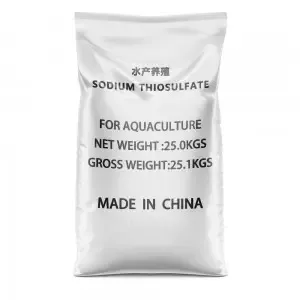



Understanding the Impact of Polyacrylamide Percentage on Pore Size Variations
Understanding Polyacrylamide and Its Pore Size Applications and Implications
Polyacrylamide (PAM) is a synthetic polymer formed from acrylamide monomers through a process called polymerization. Due to its versatile properties, polyacrylamide has found wide applications across various fields, including biochemistry, civil engineering, agriculture, and environmental science. One of the critical characteristics of polyacrylamide is its pore size, which can significantly influence its performance in diverse applications. In this article, we will explore the relationship between polyacrylamide and its pore size, shedding light on its implications and applications.
Understanding Pore Size in Polyacrylamide
The pore size of polyacrylamide gels is primarily determined by the concentration of the polymer used during gel preparation and the conditions under which the polymerization occurs. Generally, higher concentrations of polyacrylamide lead to smaller pore sizes, whereas lower concentrations result in larger pores. The size of the pores is crucial as it affects the permeability of the gel and its ability to separate molecules based on their size and charge during electrophoresis.
Pore size is typically measured in nanometers and can be controlled by adjusting various parameters during the polymerization process, including the ratio of acrylamide to bis-acrylamide, which acts as a cross-linking agent. This ability to regulate pore size makes polyacrylamide an invaluable tool in biochemistry and molecular biology, particularly for applications such as gel electrophoresis, where the separation of DNA, RNA, or proteins is required.
Applications of Polyacrylamide Based on Pore Size
polyacrylamide pore size

1. Gel Electrophoresis In molecular biology laboratories, polyacrylamide is often employed to create gels used in electrophoresis, a technique allowing the separation of nucleic acids and proteins. Depending on the target molecules' sizes, researchers can prepare gels with specific pore sizes to achieve optimal separation. For example, smaller pore sizes enhance the resolution for smaller DNA fragments, while larger pores may be more suitable for larger proteins.
2. Water Treatment In environmental applications, polyacrylamide is widely used as a flocculant in water treatment processes. The pore size influences the polymer's ability to interact with suspended particles. Variations in pore size can result in increased efficiency in removing particulates and contaminants from water, facilitating cleaner discharge into natural bodies of water.
3. Agriculture Polyacrylamide is used in soil treatments to improve water retention and reduce erosion. The pore size of polyacrylamide affects its capacity to hold water and nutrients, which in turn influences crop yield. When used as a soil amendment, the ability to regulate pore size can help maintain soil structure and enhance microbial activity in agricultural systems.
4. Tissue Engineering Pore size is a critical factor in the development of scaffolds for tissue engineering. Polyacrylamide gel can be engineered to create three-dimensional structures that mimic the extracellular matrix, facilitating cell growth and tissue formation. The appropriate pore size is crucial for nutrient diffusion and cellular migration, which are vital for successful tissue regeneration.
Conclusion
The versatility of polyacrylamide as a polymer is significantly influenced by its pore size, which can be meticulously controlled to suit specific applications. From enabling the separation of biomolecules in gel electrophoresis to enhancing water treatment processes and improving agricultural practices, the control of pore size in polyacrylamide gels unlocks a myriad of possibilities across different sectors. As research and technology advance, we can expect new and innovative uses of polyacrylamide that further exploit its unique properties, particularly concerning pore size. Understanding the relationship between polyacrylamide and its pore size will remain a crucial area of study for researchers and industry professionals alike, leading to enhanced methodologies and improved outcomes in various applications.
-
Why Sodium Persulfate Is Everywhere NowNewsJul.07,2025
-
Why Polyacrylamide Is in High DemandNewsJul.07,2025
-
Understanding Paint Chemicals and Their ApplicationsNewsJul.07,2025
-
Smart Use Of Mining ChemicalsNewsJul.07,2025
-
Practical Uses of Potassium MonopersulfateNewsJul.07,2025
-
Agrochemicals In Real FarmingNewsJul.07,2025
-
Sodium Chlorite Hot UsesNewsJul.01,2025










